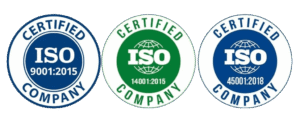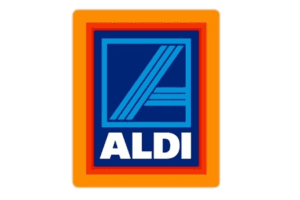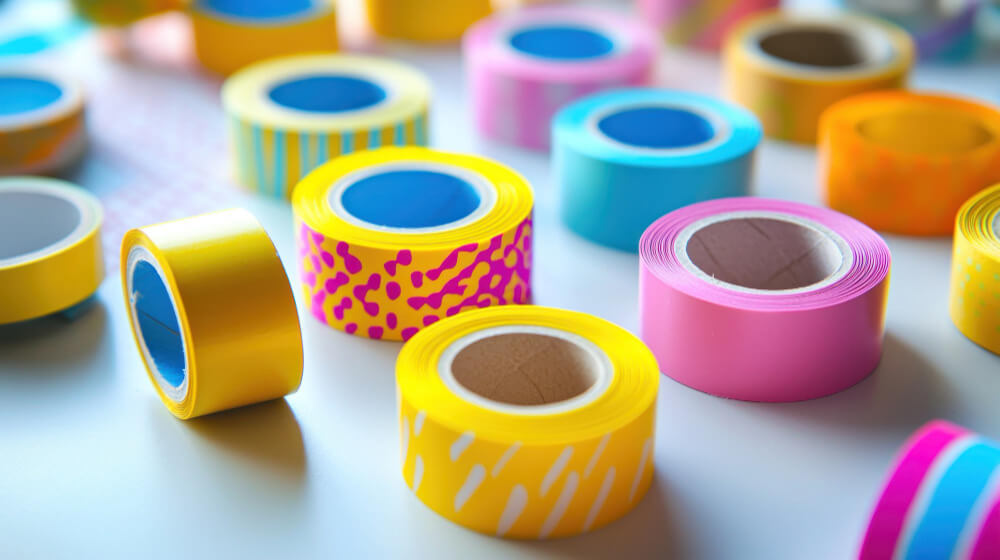Audio Blog on Adhesive Tapes
1. Foundational Principles of Adhesive Tape Technology
An adhesive tape is a sophisticated composite material engineered for a specific function. While often viewed as a simple product, its performance is a direct result of the strategic combination of several key components: a carrier, an adhesive, and, in many cases, a protective release liner. The precise interaction of these elements determines the tape’s mechanical strength, adhesion properties, durability, and suitability for various applications.
1.1 Anatomy of an Adhesive Tape
The foundational structure of a pressure-sensitive adhesive (PSA) tape consists of a backing, a pressure-sensitive adhesive layer, and a release liner. The backing, also known as the carrier, provides the structural support and overall durability of the tape. Its chemical composition is specifically chosen to provide a tape with properties such as tensile strength, flexibility, or conformability, which are crucial for the end application.1
The adhesive layer is the “sticky” component. Unlike water-activated tapes or hot melt adhesives that require an external force to become tacky, pressure-sensitive adhesives are formulated to bond to a surface upon the application of pressure alone.2 The performance of this layer is not a single characteristic but a balance of different metrics, including tack, shear strength, and peel adhesion.
Many adhesive tapes, particularly double-sided tapes and transfer tapes, are manufactured with a release liner. This is a crucial protective layer that prevents the adhesive from bonding to itself or other surfaces before it is applied.4 For single-coated tapes, a low-surface energy coating known as a release coat or backsize is applied to the non-adhesive side of the carrier to ensure the tape unwinds smoothly from the roll and does not stick to itself during dispensing.2
1.2 Adhesive Functionality and Performance Metrics
Adhesive tape performance is quantified through a series of technical metrics that describe how the tape behaves under different forces and environmental conditions.
- Tack: This is the immediate bond strength or “initial stickiness” upon contact with a surface.4 Tapes with high tack, such as those used for mounting and instant repairs, deliver immediate bond strength. In contrast, tapes with low tack, like painter’s tape, are designed for easy repositioning or clean removal.4 This is a deliberate engineering choice; a low-tack value is not an indicator of low quality, but rather a purposeful design for applications where clean removal is paramount.
- Shear Strength: This metric measures the tape’s ability to resist forces that are applied parallel to the bonding surface.6 A high shear strength is critical for structural applications, such as mounting and bonding, where a sustained static load is applied.7 For example, 3M™ VHB™ Tapes, engineered to replace mechanical fasteners, are designed with a high shear strength to resist loads that could cause the joined surfaces to slide past one another.6
- Peel Adhesion: This is the force required to remove a tape from a surface at a specific angle, typically 90° or 180°.6 It is a common metric on product datasheets and is a key factor in applications that must withstand lifting forces or can be subjected to deliberate removal.
- Tensile Strength: This is a measure of the tape’s resistance to a pulling force before it breaks. It is typically measured in pounds per inch of width (lb/in).9 The tensile strength is directly related to the thickness of the backing material and is a critical consideration for applications like strapping or sealing heavy-duty packages.11
- Elongation: Elongation measures the percentage a tape can stretch before breaking.10 This property is particularly important for tapes used on irregular or curved surfaces, such as electrical tapes, which must conform tightly around wires without breaking.12 A tape with a plastic film backing will have an elastic stretch, while a paper backing will have a “dead stretch” with no recovery.2
1.3 Non-Adhesive and Water-Activated Tapes
While the query is centered on adhesive tapes, it is important to distinguish other tape types that operate on different principles. Non-adhesive films or laminates, for instance, adhere by themselves through a physical phenomenon, such as static cling or molecular attraction, rather than a chemical adhesive.4
Water-activated tapes, also known as gummed paper tapes, represent a unique hybrid category.4 Their adhesive, typically a starch or animal glue base, is not a pressure-sensitive material and requires a moistening process to activate its bond.4 This activation creates a strong, durable seal, making them a common choice for sealing packages.
2. Classification by Tape Construction
Beyond their core components, adhesive tapes are categorized by their structural configuration, which dictates their primary function. The three main constructions are single-coated, double-coated, and adhesive transfer tapes.
2.1 Single-Coated Tapes
Single-coated tapes are the most fundamental and ubiquitous form of adhesive tape.4 In this construction, a single layer of adhesive is applied to one side of a carrier material. The exterior side of the carrier is often treated with a release agent to allow the tape to unwind smoothly from the roll without the adhesive sticking to the backing.4 This design makes single-coated tapes ideal for applications that involve wrapping, sealing, protecting, or masking a single surface. Common examples of single-coated tapes include electrical tapes, duct tapes, masking tapes, and packaging tapes.4
2.2 Double-Coated Tapes
Double-coated tapes consist of a carrier material with an adhesive film applied to both sides.4 A release liner is used to separate the adhesive layers and protect the tape prior to application. This construction is highly customizable, as the thickness and type of adhesive can be varied on each side to meet different bonding requirements.4 Double-coated tapes are used to bond two substrates together, particularly when they have different surface properties. Applications range from securing carpets to the floor to bonding surfaces in high vibration or shock environments using foam carriers.4 Modern medical wearables, such as continuous glucose monitors, leverage double-coated tapes to secure devices to the skin.13
2.3 Adhesive Transfer Tapes
Adhesive transfer tapes, also known as unsupported tapes, are a specialized construction designed for discrete, seamless bonding.4 They consist of an adhesive film without a carrier material, which is protected on both sides by a release liner.4 The absence of a carrier allows for a clean, unobtrusive bond where the adhesive is the only material present between the two substrates.4 This construction has a key advantage: its temperature resistance is limited only by the properties of the adhesive itself, as there is no carrier to fail under thermal stress.4 Adhesive transfer tapes are most commonly used for laminating, bonding different materials, and adhering graphic overlays or metal nameplates to plastic housings.13
3. Analysis of Adhesive Chemistries
The choice of adhesive chemistry is a critical factor in determining a tape’s performance and suitability for specific environments. Each formulation represents a strategic balance of properties, with trade-offs in areas such as initial tack, durability, temperature resistance, and cost. The most common adhesive types are rubber, acrylic, and silicone, with hot melt representing a widely used sub-category.
3.1 Rubber-Based Adhesives
Rubber-based adhesives are among the most commonly used in pressure-sensitive tapes, formulated from natural or synthetic rubbers combined with tackifying resins.14 They are known for their high initial tack and peel strength, which provides an immediate and aggressive bond.14 These adhesives are a cost-effective solution for a wide range of applications and provide highly flexible bonds, even performing well at colder temperatures.2 Furthermore, natural rubber is non-conductive, making it a common choice for electrical tapes.11
However, rubber adhesives have significant limitations. They have poor resistance to high temperatures, UV light, and oxidation, which can lead to a breakdown in long-term performance.2 Due to these vulnerabilities, they are best suited for indoor applications where environmental conditions are stable and immediate bonding is the primary requirement.14 Common examples include general-purpose electrical tapes and tapes used in trade shows.15
3.2 Acrylic-Based Adhesives
Acrylic adhesives are formulated from acrylic polymers and are known for their exceptional durability and resistance to harsh environmental factors.14 They offer superior long-term bond strength and are highly resistant to UV light, moisture, and solvents.14 This stability to oxidation and UV exposure allows an acrylic adhesive tape to provide many years of protection, making them ideal for outdoor and long-term applications.2
A key characteristic of acrylic adhesives is their lower initial tack compared to rubber adhesives.14 They require pressure and time to achieve their full bond strength, a property often referred to as a “cure time”.14 While this requires patience during application, it is a purposeful trade-off for their long-term durability.2 There are two main types: water-based acrylics, which are more economical, and solvent-based acrylics, which are more aggressive and perform better on challenging surfaces like recycled corrugated paper.11 Due to their high performance, acrylic adhesives are more expensive than their rubber counterparts.2 They are commonly used in applications exposed to the elements, such as outdoor signage, automotive parts, and aerospace components.14
3.3 Silicone-Based Adhesives
Silicone adhesives are formulated from silicone polymers and are a premium, high-performance option.14 Their primary advantage is their exceptional temperature resistance, withstanding a wide range of extreme temperatures from
−40∘F to over 500∘F.14 They also exhibit excellent adhesion to silicone substrates and are resistant to mold, fungi, and many chemicals.14 These properties make them invaluable for specialized applications in extreme environments.
The primary disadvantage of silicone adhesives is their high cost, making them the most expensive of the three main chemistries.14 They also have a low initial tack and lower overall adhesive strength compared to rubber and acrylic adhesives, requiring significant pressure and time to achieve a full bond.14 Despite this, when used in the correct application, silicone adhesives provide great bonding strength.15 Their use is best suited for specialized applications in the aerospace, automotive, and electronics industries where temperature resistance is a critical requirement.14
3.4 Hot Melt Adhesives
The term “hot melt adhesive” can refer to both a processing method and an adhesive chemistry. Hot melt adhesives are made from thermoplastic polymers.11 They are typically applied in a molten state during the manufacturing process, which gives them their name. The research materials clarify a nuanced point: hot melt is often a type of synthetic rubber-resin adhesive.3 This suggests that “hot melt” refers to a process that produces a synthetic rubber-based adhesive, rather than a completely distinct chemical category.
Hot melt adhesives are generally more durable than water-based acrylic adhesives and are capable of withstanding large temperature fluctuations without becoming brittle.11 Due to their good adhesion, holding power, and high tensile strength, they are a default choice for many general-purpose tapes, particularly for applications like labeling and packaging.11
The following table provides a summary of the key characteristics of the three primary adhesive chemistries.
| Adhesive Type | Key Advantages | Key Disadvantages | Best Suited For |
| Rubber-Based | High initial tack; cost-effective; flexible; good adhesion to low-surface-energy substrates; good for low temperatures 14 | Poor resistance to UV light, oxidation, and high temperatures; lower long-term aging performance 14 | Indoor applications requiring immediate bonding 14 |
| Acrylic-Based | High durability; strong long-term bonds; resistant to UV light, moisture, and solvents 14 | Lower initial tack; more expensive than rubber adhesives; requires pressure and time to achieve full bond strength 2 | Outdoor applications and harsh environments 14 |
| Silicone-Based | Exceptional temperature resistance ($ -40^{\circ}\text{F} $ to $ 500^{\circ}\text{F} $); excellent adhesion to silicone; resistant to chemicals 14 | High cost; low initial tack; lower overall adhesive strength 14 | Extreme temperature environments, specialized industrial applications 14 |
4. The Role of Backing Materials
The carrier or backing material is the structural foundation of a tape, providing dimensional stability, tensile strength, and key functional properties. The material’s chemical composition and physical form are meticulously selected to meet the requirements of the final application.1
4.1 Paper Backings
Paper backings are made from various materials, including crepe paper, flatback paper, and kraft paper.1 A key advantage of paper carriers is their hand-tearability and conformability.11 For masking tapes, the conformability of a crepe paper backing allows the tape to easily mask around curves and corners, a critical function for achieving clean paint lines.16 Paper backings are used in a variety of applications, including masking, labeling, bundling, and general packaging.1
4.2 Plastic Film Backings
Plastic film backings represent a broad and versatile category, encompassing materials such as polypropylene (PP), polyethylene (PE), and vinyl (PVC).1 These carriers are typically durable, moisture-resistant, and have a high tensile strength. For instance, polypropylene carriers are commonly used for packaging tapes due to their high adhesive strength and durability.9 Vinyl (PVC) is the preferred carrier for electrical tapes because of its excellent electrical insulating properties and flexibility.12 Plastic films are also used in surface protection applications and for labeling.1
4.3 Cloth and Fabric Backings
Cloth and fabric backings can be woven or non-woven, consisting of materials like cotton, polyester, or rayon.1 These carriers provide high tensile strength and durability, making them a suitable choice for heavy-duty applications. To improve performance characteristics such as flexibility or fire resistance, fabric tapes are often coated with materials like polyethylene, vinyl, or silicone.1 The use of cloth or fabric backings is a hallmark of tapes like duct tape and gaffers tape.17 Duct tape, in particular, is a common solution for HVAC repairs and sealing due to its strength and resilience.13
4.4 Foil and Foam Backings
Foil and foam backings are specialized carriers designed to meet unique performance requirements. Metal foils, available in aluminum, copper, and stainless steel, provide resistance to flame, extreme temperatures, UV rays, and most chemicals.1 Aluminum foil tapes are commonly used in the construction industry for sealing ducts and for thermal conductivity.1 Copper foil tapes are frequently used in electronics manufacturing for EMI/RFI shielding.1
Foam backings, which come in open and closed-cell structures, are used to provide conformability and compressibility between surfaces.1 This property makes them ideal for applications that require bonding two surfaces while accommodating for high vibration or shock environments.13 Advanced acrylic foam backings, such as those found in 3M™ VHB™ Tapes, provide a high-performance, closed-cell core that contributes to the tape’s exceptional shear strength and durability.6
5. In-Depth Application-Specific Analysis
The true value of understanding tape components lies in their synthesis into specific, application-driven products. An examination of common tape types reveals how each element is meticulously chosen to meet the unique challenges of a given task.
5.1 Packaging Tapes
Packaging tapes are designed to seal cartons and packages securely for shipping and storage. The key performance metrics are tensile strength and adhesion to the substrate, which is typically paperboard. These tapes must possess a high tensile strength to withstand the stresses of shipping and handling. The evidence shows a direct correlation between a tape’s thickness and its tensile strength. For instance, a heavy-duty Scotch® packaging tape, at 3.1 mil thick, has a tensile strength of 47 lb per inch of width.9 In comparison, a lighter-duty 3M™ Scotch® 311 carton sealing tape, at 2.0 mil thick, is rated for 25 lb per inch of width and is designed for utility-type applications on light to medium-weight boxes.10 This demonstrates that packaging tape is not a single product but an engineered solution with varying grades to meet specific requirements.
The adhesive chemistry is also critical. Hot melt adhesives are a default choice for general-purpose packaging due to their durability and ability to withstand temperature fluctuations.11 However, some high-performance packaging tapes, such as the 3M™ Scotch® 311, use a pressure-sensitive acrylic adhesive, which offers good adhesion to recycled liner paper and fiberboard.10 The backing material is typically a durable plastic film, such as biaxially oriented polypropylene (BOPP), which provides the high strength necessary to prevent edge tearing and splitting.3
5.2 Electrical Tapes
Electrical tapes are used to insulate and protect wires, cables, and electronic components for increased safety and reliability. The design of electrical tape exemplifies a perfect convergence of material science and application requirements. The backing is almost always vinyl (PVC) due to its excellent electrical insulating properties and flexibility.12 This flexibility allows the tape to conform tightly around the irregular shapes of wires and connectors.
The adhesive is a rubber-based formulation, which is selected because it is non-conductive.11 This combination of a flexible, insulating backing and a non-conductive adhesive is what makes the tape function effectively for its primary purpose. The most critical performance metric for electrical tape is not tensile strength but
dielectric strength—the tape’s ability to resist the flow of electricity.12 A professional-grade tape like Scotch® Super 33+™ is rated to withstand a dielectric strength of at least 1000 V/mil, a value far more relevant than its tensile strength of 14.4 lb/in.12 The tape is also engineered to meet specific regulatory standards (e.g., UL, CSA) and to perform in a wide range of temperatures, from
14∘F (−10∘C) to 176∘F (80∘C).12
5.3 Masking Tapes
Masking tapes are designed to protect surfaces from paint with the critical requirement of clean removal without leaving behind residue or causing damage. The most defining characteristics are their low tack and a carrier that allows for hand-tearability.11 The adhesive is typically a rubber-based formulation that provides enough quick stick to hold the tape in place but is specifically engineered for low-tack properties.4
The classic backing material for masking tape is crepe paper, which is used for its hand-tearability and conformability, allowing it to easily mask around curves and corners.5 The primary performance metrics for masking tape are the adhesion level and the
clean removal time, which is a measure of how long the tape can be left on a surface before it leaves a sticky residue or damages the substrate.5 Tapes are explicitly rated for this property, with options ranging from 3-day interior removal to 14-day removal, even in direct sunlight.5 The wide variety of available masking tapes, including those for hot/humid conditions or for adherence to hard-to-stick-to surfaces, demonstrates that this category is highly specialized, with manufacturers engineering specific adhesives and backings to address unique environmental challenges.16
5.4 High-Performance Bonding Tapes (VHB)
High-performance bonding tapes, such as 3M™ VHB™ Tape, are a class of double-sided tapes engineered to be a permanent replacement for mechanical fasteners like rivets, screws, and welds.6 This technology represents a significant shift in manufacturing and product design. The key to their performance is their unique construction, which features a closed-cell acrylic foam core with a general-purpose acrylic adhesive on both sides.6
The primary function of VHB tapes is not to be peeled but to resist sliding (shear) and pulling (tensile) forces, making these metrics paramount. The foam core provides high shear strength and reliable surface adhesion.7 For example, the 3M™ VHB™ 4910 tape has an overlap shear strength of 70 lb per square inch.6 The acrylic chemistry provides excellent long-term durability and resistance to extreme environments, withstanding long-term use at temperatures up to
200∘F (93∘C) and short-term exposure up to 300∘F (149∘C).6
The application of VHB tapes enables “virtually invisible fastening,” which enhances the appearance of finished goods by eliminating visible rivets and screws.6 The technology also offers production efficiency benefits by eliminating the need for drilling, grinding, or welding, and allows for the bonding of dissimilar materials with different thermal expansion rates.6 This tape is not merely an adhesive; it is a permanent structural bonding solution that redefines assembly processes.
6. Key Performance Metrics and Comparative Data
The selection of a tape for a specific application should be based on a clear understanding of its quantified performance characteristics. The following definitions and comparative table provide a concise overview of the most critical technical metrics.
6.1 Defining Technical Metrics
- Tensile Strength: The maximum stress a tape can withstand while being stretched or pulled before breaking.
- Peel Adhesion: The force required to peel the tape from a surface at a specified angle and speed.
- Shear Strength: The maximum stress a tape can withstand when a force is applied parallel to the bond line.
- Elongation: The percentage increase in a tape’s length at the moment of breakage, indicating its ability to stretch.
- Temperature Resistance: The range of temperatures the tape can withstand during operation, with distinctions for short-term and long-term exposure.
- Dielectric Strength: The maximum electric field a tape can withstand without experiencing a breakdown of its insulating properties.
6.2 Comparative Data Synthesis
The following table synthesizes key quantitative data from product datasheets to provide a direct comparison of different tape categories. The comparison highlights that each tape is an engineered solution where specific metrics are prioritized for a particular function. For example, while packaging tapes are designed for high tensile strength, the primary function of electrical tape is its dielectric strength. Similarly, VHB tapes are not selected for their peel adhesion but for their superior shear strength, a key metric for structural bonding.
| Tape Type (Product Example) | Tensile Strength | Adhesion (Peel) | Max Temp (Long-Term) | Key Function/Metric | Source |
| Packaging (Scotch® 311) | 25 lb/in 10 | N/A | Performs in “deep-freeze” 3 | Sealing light-to-medium boxes 10 | 3 |
| Packaging (Scotch® Heavy Duty) | 47 lb/in 9 | N/A | N/A | Sealing heavy packages 9 | 9 |
| Packaging (Scotch® 371) | 53 N/cm (30 lb/in) 3 | 4.7 N/cm (40 oz/in) 3 | Performs in “deep-freeze” 3 | General industrial packaging 8 | 3 |
| Electrical (Scotch® Super 33+™) | 14.4 lb/in 12 | 20-30 oz/in 12 | 176∘F (80∘C) 12 | Dielectric Strength: 1000 V/mil (min) 12 | 12 |
| Masking (Scotch® 2020) | N/A | “Strong” 5 | N/A | Clean Removal: 3-day indoor 5 | 5 |
| Bonding (3M™ VHB™ 4910) | 690 kPa (100 lb/in$^2$) (Normal) 6 | 26 N/cm (15 lb/in) (90°) 6 | 200∘F (93∘C) 7 | Shear Strength: 480 kPa (70 lb/in$^2$) 6 | 6 |
7. Conclusion and Recommendations
The selection of an appropriate tape requires a comprehensive understanding of its fundamental components, construction, and performance characteristics. The report demonstrates that a tape is not a single product but a highly engineered composite material where each element is chosen to fulfill a specific function. The properties of the carrier, the chemistry of the adhesive, and the overall construction are all interdependent and must be considered in concert.
7.1 Strategic Selection Guide
Based on the analysis, a strategic guide for selecting the right tape should follow a hierarchical decision-making process:
- Analyze the Environment: Determine if the application is indoor or outdoor. For outdoor use or exposure to harsh conditions like UV light, moisture, or solvents, an acrylic-based adhesive is the preferred choice.14 For indoor, stable environments, a cost-effective rubber-based adhesive may suffice.14 For extreme temperatures, a silicone adhesive is the only viable option.14
- Evaluate the Substrate: Consider the type of surface to be bonded. For surfaces with low surface energy, such as certain plastics, a rubber-based or acrylic-based adhesive may be necessary.14 For porous surfaces like paperboard, a hot melt adhesive is a common and effective choice.11
- Define the Longevity and Stress: Determine if the bond is temporary or permanent. For temporary applications requiring clean removal, such as masking, a low-tack rubber adhesive is essential.4 For permanent structural bonding, high-shear acrylic foam tapes are a suitable replacement for mechanical fasteners.7 For applications that will be subject to static loads, a tape with high shear strength is critical.6 For applications where the tape may be subject to pulling forces, a high-tensile-strength tape is required.9
- Consider Specialized Requirements: For specific functions, such as electrical insulation, prioritize a tape that has been engineered to meet specific safety standards and is rated for dielectric strength.12 For sealing ducts in HVAC applications, a foil-backed tape with resistance to flame and temperature is the ideal choice.1
7.2 Future Outlook
The tape industry continues to evolve, driven by a need for more advanced and sustainable materials. The increasing adoption of advanced acrylic foam tapes in manufacturing and product assembly demonstrates a move toward more aesthetically pleasing and efficient fastening methods.6 The development of eco-friendly alternatives, such as the use of polyethylene films as an alternative to PVC, and the continued innovation required to meet challenges like bonding to recycled paperboard, point to a future where tape technology will play an increasingly vital role in various industrial and consumer applications.1 Understanding the core principles of tape engineering will remain essential for professionals seeking to leverage these innovations.
Works cited
- Tape Backing or Carrier Types – Boyd | Trusted Innovation, accessed on August 29, 2025, https://www.boydcorp.com/blog/tape-backing-or-carrier-types.html
- Guide To Adhesive Tapes | Types Of Adhesives And … – ECHOtape, accessed on August 29, 2025, https://echotape.com/adhesive-tape-guides/complete-technical-guide-adhesive-tape/
- General Purpose Box Sealing Tape 371 – RS Online, accessed on August 29, 2025, https://docs.rs-online.com/0588/A700000011141187.pdf
- Adhesive Tape: Components and Overview – IQS Directory, accessed on August 29, 2025, https://www.iqsdirectory.com/articles/tape-suppliers/adhesive-tape.html
- Scotch® Contractor Grade Masking Tape 2020 | 3M United States, accessed on August 29, 2025, https://www.scotchbrand.com/3M/en_US/p/d/b00035579/
- Technical Data Sheet – Stronger security is required, accessed on August 29, 2025, https://multimedia.3m.com/mws/media/2366536O/3m-vhb-tape-specialty-tape-4910.pdf
- 3M™ VHB™ Tape 4950 | 3M United States, accessed on August 29, 2025, https://www.3m.com/3M/en_US/p/d/b40065670/
- Technical Data Sheet – 3M, accessed on August 29, 2025, https://multimedia.3m.com/mws/media/2365497O/3m-scotch-industrial-box-sealing-tape-371.pdf
- Scotch® Heavy Duty Shipping Packaging Tape With Dispenser – Demco, accessed on August 29, 2025, https://www.demco.com/scotch-reg-heavy-duty-shipping-packaging-tape-with-dispenser
- 3M™ Scotch® 311 Carton Sealing Tape | 25 lb. Tensile Strength | 2 mil., accessed on August 29, 2025, https://www.cabletiesandmore.com/carton-sealing-tape-3m-311-machine-roll
- The Complete Guide to Tape Adhesives, accessed on August 29, 2025, https://www.tapejungle.com/news/adhesive-tape-complete-guide
- Scotch® Super 33+™ Vinyl Electrical Tape – 3M, accessed on August 29, 2025, https://multimedia.3m.com/mws/media/104792O/scotch-super-33-vinyl-electrical-tape-pdf-27-3kb.pdf
- Tape Construction Types – Boyd | Trusted Innovation, accessed on August 29, 2025, https://www.boydcorp.com/blog/tape-construction-types.html
- Common Adhesive Types Presently Used In Pressure Sensitive Tapes, accessed on August 29, 2025, https://mpi-matco.com/pressure-sensitive-tape/common-adhesive-types-presently-used-pressure-sensitive-tapes/
- Which Tape Adhesive Do You Need? – Tape Jungle, accessed on August 29, 2025, https://www.tapejungle.com/news/which-tape-adhesive-do-you-need/
- Masking & Paper Tapes Pro Guide – Shurtape, accessed on August 29, 2025, https://www.shurtape.com/wp-content/uploads/imported-files/fnzpc6l7afzk5akxvjiu.pdf
- 3M Tapes | 3M United States, accessed on August 29, 2025, https://www.3m.com/3M/en_US/p/c/tapes/
- Electrical Tape, 17lbs, Rubber Adhesive, Red | IEWC.com, accessed on August 29, 2025, https://www.iewc.com/product/000000000032067224










